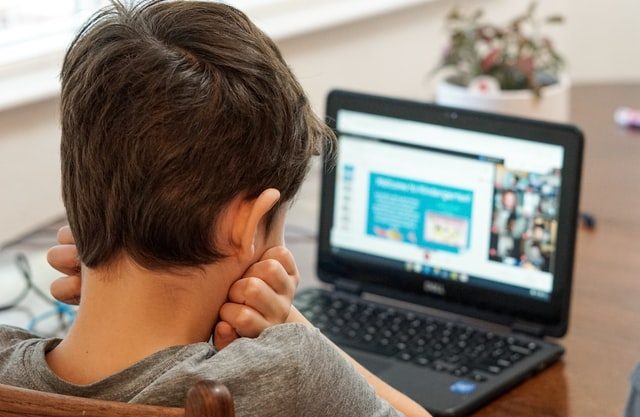The aftermath of the COVID-19 pandemic has forced schools worldwide to shut down, which impacted 1.2 billion children in 186 countries. As a response, countries adopted digital learning mediums to continue providing education to children. This also resulted in a boom of ed-tech companies, which use technology to facilitate education.
According to CB Insights data, ed-tech companies worldwide raised $8.27 billion till September 24, 2021, and are expected to raise a total of $11.03 billion by the end of this year, compared with $12.63 billion raised last year. The overall online education market is projected to reach $350 billion by 2050.

With enormous investments pouring into the ed-tech sector, the education sector is becoming a vast for-profit sector attracting entrepreneurs worldwide to venture into this field.
However, not all ed-tech organizations believe in using this opportunity to gain profits. One such organization is Khan Academy; a non-profit educational organization started in 2005 by Salman Khan, who is on a mission to provide “a free, world-class education for anyone, anywhere.”
A journey that started from YouTube
After completing his education at MIT and then Harvard, Sal Khan started working as a financial analyst in 2004. At the same time, he was also helping his cousin, who was struggling with Math through remote tutoring.
When the word of free tutoring reached his other relatives, they also started requesting the same. When the demand exceeded, one of Sal’s friends recommended that he record his tutorials and upload them on YouTube for anyone to watch them anytime.
Initially skeptical, Khan decided to give it a shot. He used a digital blackboard and recorded himself teaching fundamental concepts of basic math in small videos of less than 10 minutes and uploaded them on YouTube. The word started spreading about free tutorials on YouTube, and Khan received appreciative comments on his videos, followed by letters thanking him for his work.
In 2009, when Khan was working for a hedge fund, he decided to quit and start working full time to build Khan Academy, an online ed-tech platform that can provide education to anyone, anywhere at no cost at all.
By 2012, as per Forbes, Khan Academy videos were viewed more than 200 million times. The site was used by 6 million unique students each month, who have collectively solved more than 750 million problems (about 2 million a day), and the material, provided at no cost, was (formally or informally) part of the curriculum in 20,000 classrooms around the world.
By 2019, Academy’s platform contains practice exercises, instructional videos, dashboard analytics, and teacher tools which empower learners in and outside of the classroom to study at their own pace. The platform covers subjects from basic math to physics, biology, economics, art history, computer science, health and medicine, and many more.
As per its 2019 annual declaration,
- Khan Academy features 13,000+ short instructional videos, 429 courses, 4347 articles and 74,000+ problems with interactive quizzes and tools to map children’s learning growth.
- By 2019, Khan Academy has videos in 43 languages.
- 8.7 Billion minutes of learning was done on Khan Academy platform in 2019.

As per CBS News, Before the pandemic, students were utilizing 30 million minutes of online learning on Khan Academy globally on a typical school day. In contrast, the number has tripled to ~85 million minutes per day after the pandemic. In 2020, children and young teens in the United States have spent an average of 20 minutes per day on the Khan Academy mobile app.
How does Khan Academy make money?
As soon as Khan Academy picked up the pace, Sal’s friends at Silicon Valley asked him about the business model to which Khan replied that there is no business model. So, the questions arise how does Khan Academy make money, what is its business model, and how would it expand and continue its operations to realize its mission of free education. The answer is donations.
Khan Academy received its first significant donation of $10,000 by Ann Doerr, the wife of billionaire venture capitalist John Deorr who later donated $100,000, realizing the non-profit nature of the organization. In 2010, Bill Gates told an audience at the Aspen Ideas Festival that he uses Khan Academy to teach his child. Soon, Khan received a call for a meeting with Gates, and ‘Bill and Melinda Gates Foundation’ became Khan Academy’s biggest supporter.
Then companies like Google, NewSchools Venture Fund, Netflix CEO Reed Hastings, and Mexican billionaire Carlos Slim came on board to contribute more. Even Google chairman Eric Schmidt joined to serve on the organization’s board. Within two years of operations, through donations, Khan Academy was able to raise $16.5 million with assurances of more to come.
In 2014, Khan Academy started an offline private school named Khan Lab School for children aged 5 to 18. It aims to provide education using novel approaches in a classroom setup. Some part of the revenue is generated from this school in the form of tuition fees.
In Jan’21, the world’s richest person and business magnate Elon Musk donated $5 million to Khan Academy by means of the Musk Foundation.
As per 2019 financial reports, Khan Academy raised a total of $4,79,88,831 with a break up of revenue as follows:
- $20,413,803 from Foundations and individual gifts,
- $4,124,214 from Community giving,
- $4,709,434 from Corporate Gifts,
- $16,860,000 from earned income and
- $1,881,380 from other income sources.
- $49,613,761 was spent from this revenue as a Program expense and $6,095,264 was spent on general and administrative expenses including fundraising.
Unlike some Ed-tech firms that are aggressively selling their courses to already stressed parents, the way Khan Academy makes money and operates is an example for global educators.
Business Model Canvas of Khan Academy
Customer Segments: Khan Academy is used by students, teachers, and parents from all around the world. It caters to education to students from kindergarten to high school.
Customer Relationship: Provides content free of cost in an advertisement-free environment with a personalized and self-paced learning experience.
Channels: Apart from Khan Academy’s website and mobile application, it also uses YouTube. However, they do not collect money from advertisements on YouTube.
Key Activities: Creating educational content is a significant activity. Other activities include site maintenance, content translation in different languages, public relations, finances, customer support, etc.
Key Resources: It includes educational content, donations, YouTube channel, volunteers, subject matter experts, and online platforms.
Value Proposition: Provides high-quality videos on subjects created by experts in different languages.
Revenue Streams: Majorly donations.
Key Partners: Key Partners include donors, subject matter experts, translators, and volunteers.
Cost Structure: This includes platform development and maintenance, help centers, network management, and human resources. In 2019 $49.6 Mn were spent in developing the program and $6 Mn+ were spent on administrative expenses.
Following the Khan Academy path
With the shift of education from traditional classroom-based teaching to digital education due to the pandemic, Khan Academy can utilize this opportunity to realize its mission of free education. They can provide a better alternative to for-profit ed-tech firms and make education accessible to all.
To give you some perspective on why paid primary education is a problem globally and why need more of Khan Academy:
- Many emerging countries do not appropriate the financial resources necessary to create schools, provide schooling materials, nor recruit and train teachers.
- Twenty-five percent of respondents to a national poll in US identified “a lack of financial support” as one of the biggest problems facing public schools in their communities.
- As per Smile Foundation, less than half of India’s children between the age 6 and 14 go to school. A little over one-third of all children who enroll in grade one reach grade eight. At least 35 million children aged 6 – 14 years do not attend school. 53% of girls in the age group of 5 to 9 years are illiterate.
With financial backing from significant personalities, Khan Academy’s business model can inspire new ed-tech firms to make education reach everyone free or at a minimal cost. This can be a game-changing moment for the ed-tech sector worldwide and the students.
-AMAZONPOLLY-ONLYWORDS-START-
Also, check out other stories by the author

How did the Just Dial Business model attract Reliance?
Just Dial follows a prepaid business model & has remained debt-free since its inception. 30 Mn listings on Just Dial and a financially stable model attracted Reliance’s growing digital ecosystem.

What marketing strategy is helping Mamaearth grow exponentially?
Mamaearth’s solid marketing strategy & USP of the absence of toxins chemicals in their products has helped them create a strong brand image among millennials.

A critical take on Mobile Game Monetization Strategies
Mobile games have seen a huge surge in revenue due to Covid lockdown but what monetization strategies do these free-to-use games adopt? They lead you to a pain point.

How Canva’s strategy is challenging the tech giants
Canva uses a freemium strategy, which is a combination of free and premium features. What is The Freemium Strategy and how Canva has excelled it?
-AMAZONPOLLY-ONLYWORDS-END-
















